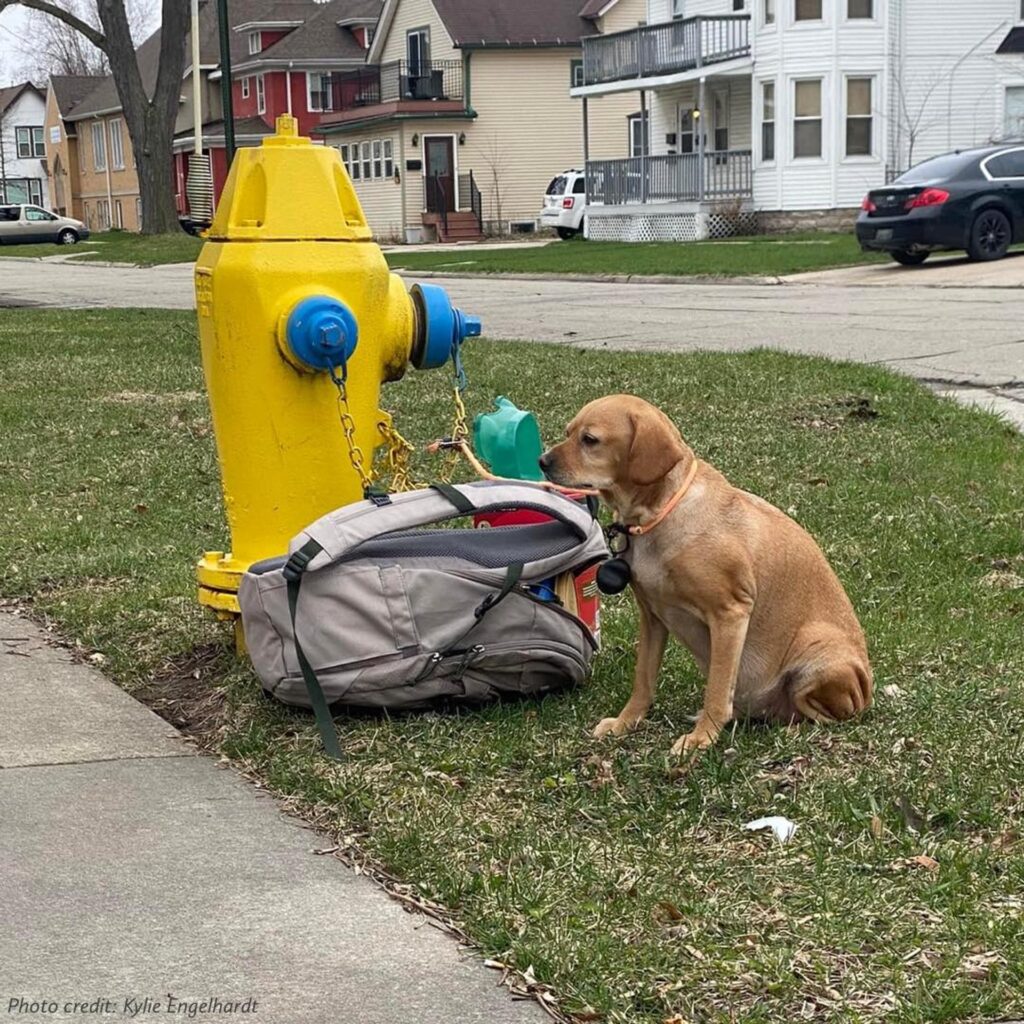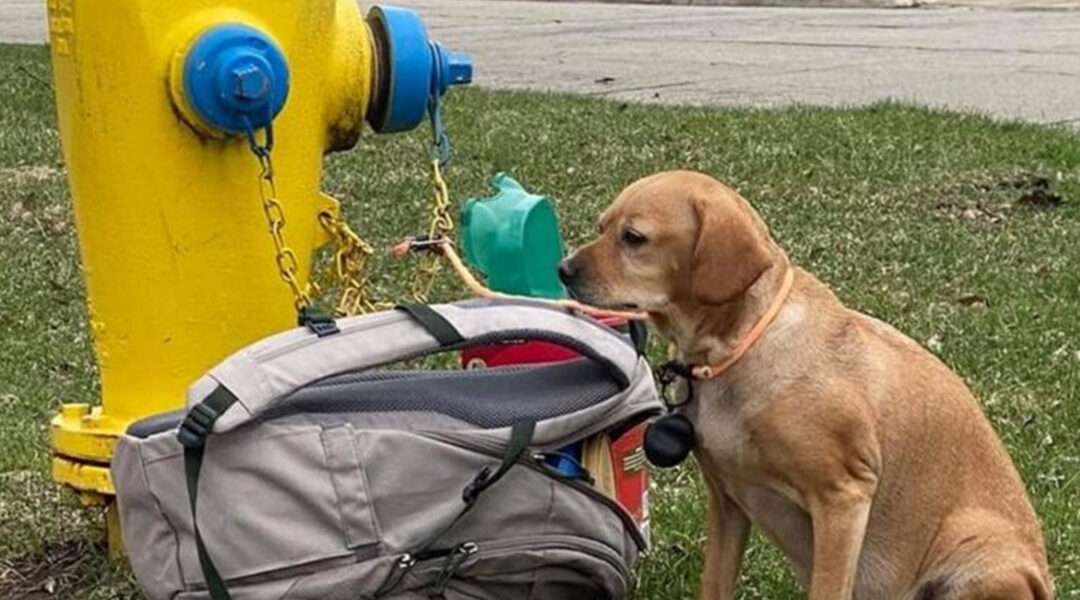On an ordinary day in Green Bay, Wisconsin, a passerby noticed something that would soon touch thousands of hearts. Sitting quietly by a fire hydrant was a mixed-breed dog, nearly six years old. Beside her sat a large backpack, neatly packed and zipped. The dog’s eyes watched the street with patient hope, as though waiting for someone who wasn’t coming back.

The woman who spotted her waited too, standing nearby for nearly an hour. Perhaps, she thought, the owner had simply stepped away. Perhaps they would return and explain. But as the minutes stretched and no one appeared, reality settled in. The dog had been left behind.
Not wanting to abandon her further, the woman reached out to the Wisconsin Humane Society’s Green Bay Campus. Within hours, photos of the scene began circulating online: the loyal dog tied to the hydrant, the backpack at her side, her calm but lonely gaze.
The reaction was immediate. Outrage filled the comments. People condemned the unknown owner with sharp words, assuming neglect, cruelty, or selfishness. To many, the image was the embodiment of abandonment.
But then came the note.

Inside the backpack, among food, treats, and toys, was a handwritten message. It explained that the owner was struggling with severe health issues and life challenges that left them unable to care for the dog. The note didn’t excuse; it pleaded. It asked for kindness. It begged that someone take care of the dog they loved but could no longer keep.
Suddenly, the story changed.
The dog, it turned out, had not been discarded carelessly. She had been loved — deeply enough that her owner ensured she had food, her favorite belongings, and was left in a visible spot where she would be quickly found. It wasn’t the act of someone who didn’t care. It was the act of someone out of options, making a painful decision with as much love as they had left to give.

The Wisconsin Humane Society confirmed the dog was healthy, well-fed, and clearly well cared for. They took her in, promising to find her a new, loving home. And as the shelter shared the full story, public sentiment shifted. The anger that had burned in so many softened into compassion.
“Sometimes life leaves people with impossible choices,” one commenter wrote. “This was an act of love, not cruelty.”
Others echoed the same, urging understanding over judgment. Many admitted they were moved not just by the dog’s patience, but by the visible effort of an owner who had tried to give her the best possible chance at a safe future.

The shelter was clear: while they do not condone anonymous abandonment, they recognize the heartbreak behind this particular case. Their focus now is on ensuring the dog — who has already shown resilience and sweetness — finds a family who can give her stability and love.
For those who followed the story online, the dog at the fire hydrant became more than a headline. She became a symbol of how complex human struggles can be, and how quick we often are to judge without knowing the full story.
And as she waits for her forever home, she carries with her not just a backpack of toys and food, but a reminder: sometimes love doesn’t look like keeping. Sometimes, love is letting go.




